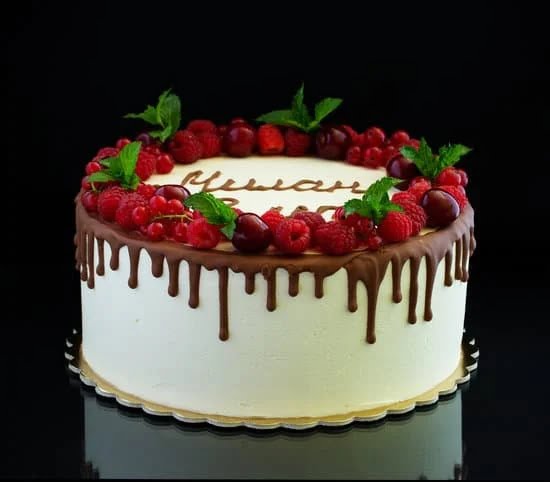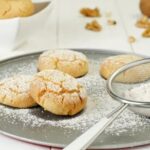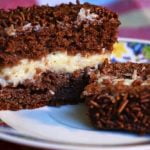The Wilton Butterfly Cake has become a beloved staple in the world of cake decorating. With its intricate design and stunning details, this cake has captured the hearts of bakers and dessert enthusiasts alike.
In this article, we will explore the art of decorating a Wilton Butterfly Cake, from gathering the necessary supplies to putting on the finishing touches. Whether you’re an experienced baker or just starting out, this guide will provide step-by-step instructions and valuable tips to help you create a masterpiece that will surely impress.
The popularity of the Wilton Butterfly Cake lies in its ability to transform any occasion into a whimsical celebration. From birthday parties to bridal showers, this cake is guaranteed to be the star of the show. Its iconic butterfly shape is not only visually striking but also allows for endless creative possibilities when it comes to decorating techniques and color schemes.
Through this article, we will dive into each aspect of decorating a Wilton Butterfly Cake, ensuring that you have all the knowledge and tools needed to bring your vision to life. From preparing and baking the cake itself to piping intricate patterns on the wings and adding realistic fondant accents, every step will be covered in detail. So let’s embark on this journey together and elevate your cake decorating skills with the enchanting Wilton Butterfly Cake.
Gathering the Necessary Supplies
To successfully decorate a Wilton Butterfly Cake, it is important to gather all the necessary supplies beforehand. Having everything you need will ensure a smooth and enjoyable decorating process. Here is a comprehensive list of supplies needed to create a stunning Wilton Butterfly Cake:
- Cake Pans: Choose two round cake pans in the desired size for your butterfly cake. These pans will be used to bake the cake layers.
- Buttercream Icing: Buttercream icing is essential for creating a smooth and delicious base for your cake. You can make your own buttercream or purchase pre-made icing from a store.
- Food Coloring: To achieve vibrant and beautiful butterfly wings, you will need food coloring in various shades. Gel-based colors are recommended as they provide intense hues without adding excess liquid.
- Piping Bags: Piping bags are necessary for applying the buttercream icing and creating intricate designs on the butterfly wings. Make sure to have different sizes of piping bags depending on the decorating techniques you plan to use.
- Decorating Tips: Various decorating tips are available to achieve different effects on your cake. For creating detailed patterns, small round tips or petal tips are ideal, while star tips are great for filling in larger areas or creating texture.
- Offset Spatula: An offset spatula will come in handy when applying the buttercream icing smoothly onto the cake layers and sculpting any additional details.
- Fondant (optional): If you want to add dimension and realism to your butterfly cake, consider using fondant accents. Fondant can be shaped and molded into various shapes such as butterflies, flowers, or other decorations.
- Rolling Pin: If you choose to use fondant, you will need a rolling pin to roll out the fondant into thin sheets that can be easily shaped and applied to the cake.
- Edible Decorations: Adding edible pearls, shimmer dust, or delicate sugar flowers can provide the finishing touches to your butterfly cake. These decorations can be purchased or made at home depending on your preference.
By having all these supplies ready, you will be well-prepared to create a beautiful Wilton Butterfly Cake that is sure to impress. Make sure to check that you have everything you need before starting the decorating process so that you can focus solely on creating a masterpiece.
Preparing the Cake
Step 1: Preparing the Cake Pans
Before you begin baking your Wilton Butterfly Cake, it is important to prepare your cake pans properly to ensure even baking and easy removal. Start by greasing the pans with butter or cooking spray, making sure to coat all sides and corners. Then, dust the pans with flour or cocoa powder, tapping them gently to evenly distribute the dusting.
Step 2: Mixing the Batter
Next, gather all the necessary ingredients for your cake batter according to your favorite recipe or a pre-packaged mix. Follow the instructions provided on the package or recipe for mixing the batter. The consistency should be smooth and free of lumps.
Step 3: Filling and Baking
Once your batter is ready, carefully pour it into the prepared cake pans, dividing it equally between them. To prevent uneven baking, tap the filled pans lightly on a flat surface to remove any air bubbles. Place the pans in a preheated oven at the recommended temperature and bake according to the specified time on your recipe or mix package.
Throughout the baking process, avoid opening the oven door frequently as it may cause uneven rising and create a sunken center in your cakes. To check if your cakes are fully baked, insert a toothpick into the center of each cake; if it comes out clean or with just a few crumbs clinging to it, your cakes are done.
Step 4: Cooling and Removing from Pans
After removing your cakes from the oven, allow them to cool in their pans for about 10-15 minutes. This helps them set properly before transferring them onto cooling racks. Carefully run a knife around the edges of each cake to loosen it from its pan. Place a cooling rack upside down on top of one of the cakes and flip the cake pan over, gently lifting it off. Repeat this process with the second cake.
To prevent your cakes from sticking to the racks, lightly grease the racks or place a sheet of wax paper beneath each cake. Let the cakes cool completely before you start decorating them. During this time, you can prepare your buttercream icing and coloring if you haven’t done so already.
By following these step-by-step instructions, you will achieve a perfectly baked and cooled cake with a smooth and even surface, ready for decorating your Wilton Butterfly Cake masterpiece.
Creating the Buttercream Base
To create a beautiful Wilton Butterfly Cake, it is essential to start with a smooth and vibrant buttercream base. This forms the canvas for all the intricate designs and decorations that will be added later. Here are some tips and tricks to ensure that your buttercream base is perfect:
- Gather Your Ingredients: To make the buttercream, you will need unsalted butter, powdered sugar, vanilla extract, and milk or heavy cream. It is important to use unsalted butter so that you can control the amount of salt in your icing. Make sure your ingredients are at room temperature before starting; this will help achieve a smoother consistency.
- Creaming the Butter: Begin by beating the butter using an electric mixer until it becomes light and fluffy. This process, known as creaming, incorporates air into the butter which helps create volume in your icing.
- Gradually Add Sugar: Slowly add powdered sugar to the creamed butter while continuing to mix on low speed. Adding sugar gradually prevents lumps from forming in your icing.
- Achieving Consistency: To get the right consistency for your Wilton Butterfly Cake’s base icing, you may need to adjust the amount of milk or cream you add. For a stiffer consistency suitable for piping intricate designs, add less liquid. If you prefer a softer and smoother consistency for spreading on your cake layers, add more liquid as needed.
- Coloring Techniques: Once you have achieved the desired consistency of your base icing, it’s time to add some color. Gel food coloring is recommended over liquid food coloring as it produces vibrant colors without thinning out your icing too much. Start with a small amount of gel coloring and mix well before adding more if needed.
Remember that lighter colors generally require less food coloring, while darker colors may require a larger amount. It’s always easier to add more color, so start with a light hand and gradually build up to your desired shade.
By following these tips and tricks, you can create a smooth and vibrant buttercream base for your Wilton Butterfly Cake. The base icing will provide the perfect backdrop for the intricate designs of the butterfly wings and other decorations that you will be adding later. Experiment with different colors and consistencies to achieve your desired look, and get ready to impress everyone with your cake decorating skills.
Piping the Butterfly Wings
When it comes to decorating a Wilton Butterfly Cake, creating the intricate patterns and designs on the butterfly wings is a key highlight of the process. Piping is an essential technique to master in order to achieve these beautiful wing details.
To begin, gather your desired piping tips for creating different patterns. It’s recommended to use smaller tips such as round tips with varying sizes or petal tips to achieve detailed and delicate designs. Experimenting with different tip sizes and styles will allow you to create unique and visually appealing patterns on your butterfly wings.
Before starting to pipe, make sure that your buttercream icing is at the right consistency – not too stiff and not too loose. The proper consistency will ensure that your piping lines are smooth and consistent.
To pipe the butterfly wings, start by holding the piping bag at a 45-degree angle above your cake surface. Apply gentle even pressure while guiding the tip in a steady motion to pipe out a thin line. Slowly move the piping bag across the surface of the cake, following your desired wing shape. If using multiple colors for your wings, be sure to exchange piping bags or tips accordingly.
As you pipe, remember to keep an eye on maintaining consistent pressure for even line thickness throughout. You can practice your piping technique on parchment paper before moving onto your actual cake if you’re feeling unsure or want to perfect your skills first.
| Piping Technique | Description |
|---|---|
| Lines | Create straight or curved lines with different thicknesses. |
| Drop Flowers | Create small flower shapes by squeezing and releasing pressure. |
| Stars | Create star-shaped designs for added texture and detail. |
By mastering the art of piping, you’ll be able to create stunning and intricate wing patterns on your Wilton Butterfly Cake. With practice and a steady hand, you can add your own unique touch to make each butterfly wing design one-of-a-kind.
Adding Dimension with Fondant
Fondant is a versatile ingredient that can elevate your Wilton Butterfly Cake by adding dimension and a realistic touch. It allows you to create intricate details such as butterfly wings, antennae, or even delicate flowers. Here are some detailed instructions on how to work with fondant and incorporate it into your cake decoration:
- Preparing the Fondant: Before working with fondant, make sure your hands are clean and dry. Sprinkle a clean surface with powdered sugar or cornstarch to prevent sticking. Knead the fondant until it becomes soft and pliable. You can also color the fondant using food coloring gel or paste according to your desired shade.
- Shaping Fondant Accents: To create butterfly wings, roll out a portion of colored fondant into a thin sheet using a rolling pin. Using butterfly-shaped cookie cutters, cut out two identical shapes for each wing. Gently lift each wing and place them on a parchment-lined baking sheet. Allow them to dry for at least 24 hours until they harden.
- Attaching Fondant Accents: Once the fondant accents have hardened, you can attach them directly onto the cake using buttercream icing or edible glue. Apply a small amount of icing on the backside of each wing and press them firmly onto the cake’s surface, following the design you desire.
| Supplies | Usage |
|---|---|
| Fondant | To shape butterfly wings and other accents |
| Rolling Pin | To roll out fondant into a thin sheet |
| Parchment Paper | To place fondant accents for drying |
| Buttercream Icing or Edible Glue | To attach fondant accents onto the cake |
Using fondant on your Wilton Butterfly Cake can take its appearance to the next level. Experiment with different shapes, colors, and designs to create a unique and visually stunning cake. Remember to keep practicing and have fun with your decoration – the possibilities are endless.
Decorating the Body and Antennae
Once you have piped and shaped the intricate wings of your Wilton Butterfly Cake, it’s time to focus on adding the body and antennae. This is where you can truly bring your butterfly cake to life and add those final touches that will make it stand out. There are two main techniques you can use for this step: piping and fondant modeling.
Piping Techniques
To pipe the body of your butterfly, you will need a small round piping tip, such as a size 3 or 4. Fill a piping bag fitted with the round tip with colored buttercream icing of your choice. Start by piping a thin line down the center of the butterfly’s body, gradually thickening it towards the abdomen. Create a slightly curved shape to mimic the natural contours of a butterfly’s body.
Next, switch to a smaller round tip, like a size 1 or 2, to pipe the antennae. Again, fill another piping bag fitted with this smaller tip with colored buttercream icing. Hold the piping bag at a slight angle and pipe two thin lines side by side for each antenna. Gently taper one end of each line to make them appear more delicate.
Fondant Modeling
If you prefer using fondant for more detailed and sculptural decorations, creating the body and antennae can be achieved through fondant modeling. Start by coloring small portions of fondant in colors that match your desired design for the butterfly’s body and antennae.
Shape one piece of colored fondant into a small oval shape for the body. Use your fingers or small tools to add texture or details if desired. Attach it securely onto the cake using piped buttercream icing as an adhesive.
For the antennae, roll two thin, long strips of fondant in a color that matches the body or contrasts with it. You can use a fondant rolling pin or your hands to achieve the desired thickness and length. Attach each antenna to the cake by gently pressing them onto the body, making sure they stand upright.
Whether you choose piping or fondant modeling, decorating the body and antennae of your Wilton Butterfly Cake will add that final touch of realism and whimsy. Feel free to experiment with colors and designs to truly make this cake your own masterpiece.
Adding the Finishing Touches
After successfully piping and shaping the butterfly wings, it’s time to add those exquisite finishing touches that will truly elevate your Wilton Butterfly Cake. These small details can make a big impact and give your cake a professional and polished look. Here are some expert tips on how to add those final details:
- Edible Pearls: One popular option for adding elegance and sophistication to your butterfly cake is by incorporating edible pearls. These tiny, round decorations can be easily attached to the body of the butterfly or strategically placed along the edges of the wings. To apply them, simply use a dab of buttercream icing or even edible glue for a secure hold. Edible pearls in various sizes and colors can be found in specialty baking stores or online.
- Shimmer Dust: If you’re looking to add a touch of sparkle and shine to your butterfly cake, shimmer dust is an excellent choice. This edible powder comes in a wide range of colors and can be brushed onto the wings, body, or antennae of the butterfly using a clean paintbrush.
Apply lightly for a subtle effect or build up layers for a more dramatic look. Shimmer dust instantly adds glamour and creates an eye-catching finish. - Delicate Sugar Flowers: For those who want to take their Wilton Butterfly Cake to new heights of beauty, consider adding delicate sugar flowers as decorative accents. These intricately crafted blooms can be made out of fondant or gum paste using flower cutters and molds.
Arrange them on top of the wings or around the body for an elegant touch. You can choose flowers that match your color theme or opt for contrasting hues for added visual interest.
Remember, when adding these finishing touches, it’s important not to overwhelm or overcrowd your design. Less is often more, and a few carefully placed details can have a powerful impact. Take your time and experiment with different combinations until you achieve the desired effect. With these expert tips, your Wilton Butterfly Cake will be the star of any celebration, mesmerizing guests with its beauty and charm.
Whether you choose to use edible pearls, shimmer dust, sugar flowers, or a combination of these elements, each detail will contribute to the overall enchantment of your butterfly cake. These finishing touches go beyond mere decoration; they elevate the cake from ordinary to extraordinary. So let your creativity soar as you add those final delicate accents that will make your Wilton Butterfly Cake truly unforgettable.
Presentation and Serving Suggestions
Once you have successfully decorated your Wilton Butterfly Cake, it’s time to think about how to present it in an appealing way. The presentation of the cake can enhance the overall visual impact and make it even more enticing for your guests. Here are some suggestions on how to present your Wilton Butterfly Cake:
- Cake Stand or Platter: Place your decorated butterfly cake on a beautiful cake stand or platter to create a focal point on the dessert table. You can choose a stand that matches the theme or colors of your event, or opt for a simple and elegant design.
- Decorative Accents: Enhance the presentation by adding some decorative accents around the cake. Fresh flowers, edible petals, or sugar butterflies can be strategically placed around the perimeter of the cake to complement its butterfly theme.
- Garnishes: Consider adding some garnishes that complement the flavors and colors of the cake. For example, you can sprinkle some edible glitter or sugar crystals on top of the buttercream icing to give it a shimmering effect. Fresh berries, mint leaves, or a dusting of cocoa powder can also be used as garnishes depending on the flavors of your cake.
- Accompaniments: Another way to elevate the presentation is by serving complementary accompaniments alongside the Wilton Butterfly Cake. For instance, fresh whipped cream, berry compote, or a scoop of ice cream could be served in individual dishes next to each slice of cake.
When it comes to serving sizes, keep in mind that one standard-sized Wilton Butterfly Cake typically serves about 12 people. If you’re serving multiple desserts at an event or expecting a larger crowd, consider making multiple cakes or cutting smaller slices to accommodate all guests.
Conclusion
In conclusion, decorating a Wilton Butterfly Cake is an exciting and creative endeavor that can bring joy to both bakers and cake enthusiasts alike. Throughout this article, we have discussed the necessary supplies, step-by-step instructions, and expert techniques required to achieve a stunning butterfly cake.
Gathering all the necessary supplies is the first step in creating a beautiful masterpiece. From cake pans to piping bags, each tool plays an important role in bringing your butterfly cake to life. Preparing the cake with care ensures a smooth surface for decorating, while creating a vibrant buttercream base adds depth and color to the design. Piping the intricate patterns of the butterfly wings requires patience and precision, while adding fondant accents can bring added dimension.
To truly make your Wilton Butterfly Cake stand out, don’t forget about the body and antennae details. Whether you choose to use piping techniques or fondant modeling, these finishing touches will truly complete the overall design. And finally, adding those final touches such as edible pearls or shimmer dust will add that extra sparkle.
We encourage our readers to embrace their creativity and showcase their own Wilton Butterfly Cakes using the provided techniques and inspiration. Each cake is unique and can be customized to fit any occasion or personal preference. So go ahead, put your skills to practice and let your imagination run wild as you create a stunning Wilton Butterfly Cake that will surely delight all who see it. Happy decorating.
Frequently Asked Questions
How do you decorate a cake with edible butterflies?
Decorating a cake with edible butterflies can be a delightful way to add a touch of whimsy and elegance to your creation. To begin, make sure you have edible butterflies that are specifically designed for decorating cakes. Gently peel the butterflies off their backing and handle them delicately to avoid any damage. Determine where you would like to place the butterflies on your cake, considering factors such as color coordination and overall design.
Press the butterflies lightly onto the frosting or buttercream, ensuring they stick securely but without applying too much pressure that may potentially squash them. You can arrange them in a symmetrical pattern, create a cascading effect, or scatter them around randomly for a more natural appearance. Step back and assess the overall look of your cake to ensure that the placement of the butterflies complements its aesthetic appeal.
How do you put a butterfly cake topper on?
Putting a butterfly cake topper on your cake is usually a simple process that adds an instant decorative element. Start by selecting a suitable butterfly cake topper that matches your desired theme or style. Carefully remove the packaging from the butterfly topper and inspect it for any fragile parts or attachments.
Next, determine where you wish to position it on top of your cake – you might opt for placing it in the center, slightly off-center, or towards one corner depending on your preference. Gently press the toothpick or any other support mechanism provided with the butterfly into the top of the cake until it feels secure enough to hold it upright while also taking care not to pierce or damage the underlying layers of frosting or decoration. Once in place, step back and admire how adding this simple adornment has enhanced the overall appearance of your cake.
How do you arrange butterflies on a cake?
Arranging butterflies on a cake allows for creative expression and customization tailored to your preferences. Consider using edible butterflies or decorative ones made from lightweight materials so they won’t weigh down your frosting or icing excessively. It’s helpful to plan out your arrangement beforehand by visualizing where you want the butterflies to be placed. You can cluster them together as a focal point or create a trail of butterflies that appears to take flight across the surface of your cake.
If you have different sizes or colors of butterflies, try alternating them to achieve an eye-catching and dynamic effect. Gently press each butterfly into the frosting or buttercream, ensuring they are securely attached but also taking care not to overcrowd the cake or place them too close to the edges where they might fall off. The arrangement should ultimately reflect your creativity while beautifully accentuating the overall design of your cake.

Welcome to our cake decorating blog! My name is Destiny Flores, and I am the proud owner of a cake decorating business named Cake Karma. Our mission is to provide delicious, beautiful cakes for all occasions. We specialize in creating custom cakes that are tailored specifically to each customer’s individual needs and tastes.





